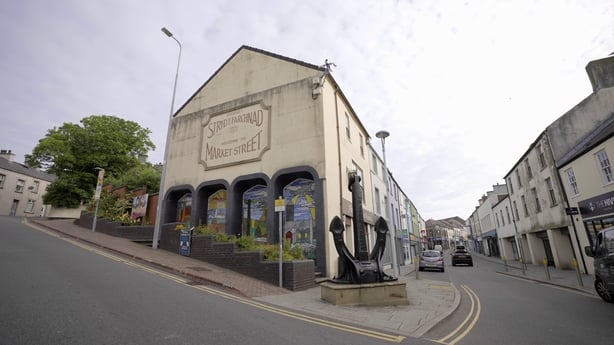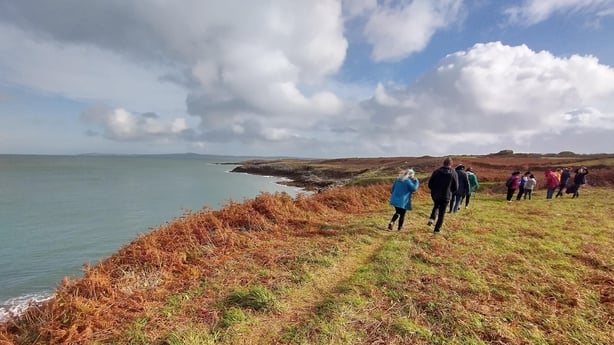Analysis: ferry crossings between Ireland and Wales are dotted with historical, environmental and creative connections linking the two nations
By Ailbhe McDaid and James Louis Smith, UCC
If you find yourself impatiently waiting in a Welsh ferry port queue longing to be back in Ireland, rest assured that you're not alone. In 1727, Jonathan Swift cursed Holyhead as 'the worst spot in Wales’ while ‘fastened by both wind and tide’ for four days while his lover was dangerously ill in Dublin. Bad weather and delayed travel have long been the curse of the maritime traveler, affecting even royalty. In August 1821, King George IV found himself detained in Holyhead by westerly winds for nearly a week.
Despite your age-old frustrations, don’t miss the busy and at times invisible lives of port towns. They are often unfairly treated as transitory spaces alone, becoming somewhere to be ‘escaped’ in a hurry for more exciting destinations. But as you pass through, consider the rich history in which you play a part. Port towns, and port communities, are brimming with all kinds of human, commercial, geopolitical and environmental stories. Ports are places where cultures connect, where human endeavour meets the natural environment, and where communities encounter the storied tenacity, resilience and energy of the Irish sea.

When driving home and passing through Holyhead or one of the other active ports on the Irish Sea such as Dublin, Fishguard, Rosslare Harbour and Pembroke Dock, there are plenty of fascinating features to pass the time away. A world of stories emerges from the ocean and clings to the coast in all port towns.
Holyhead itself is rich with histories of the people who have passed through and the diverse families who share links with Ireland and the wider world through the cultural mixture of port life. These are showcased in the Ucheldre Arts Centre, the Maritime Museum and the many small businesses and coffee shops within the town centre.
A short drive from the ferry port brings you to Holyhead Breakwater Country Park, blasted from the hulking flank of the mythological Mynydd Twr (Holyhead Mountain), which generated the stone for the distinctive Holyhead Breakwater (the longest in Europe). Gillian Brownson’s poem evokes the magic of the mountain, and the park which has been transformed into a biodiverse landscape of lakes, animals, insects and birdlife, complete with stunning views of the rocky coastline, a coffee shop and a children’s playground that is perfect for restless legs after a long car journey.

From the heights of Breakwater Country Park, the power and vitality of the Irish Sea is unmistakable. If a rocky crossing on the famously rough sea leads you to contemplate an alternative mode of transport across the water, spare a thought for early air travellers who attempted to cross the Irish Sea by hot air balloon.
Richard Crosbie's 1785 shortlived balloon ride was witnessed by 20,000 people when he lifted off from Dublin Bay, but ended just two kilometres away in Clontarf. It wasn’t until 1817 that Windham Sadler successfully reached Holyhead after a windy six-hour journey by balloon. Definitely less comfortable than the ferry!
Trailer for Dubln Port and Holyhead for the Ports, Past and Present project.
For many, a glimpse of the Kish Lighthouse at the entrance to Dublin Bay is the first sign of home, followed by the unmistakable stacks of Poolbeg to the left to North Bull Island to the right as you enter the bay, itself a designated UNESCO biosphere. Gary Brown's poem The Read Song gives a glimpse of the difficult working life of Dublin dockers, many of whom worked within the Diving Bell, a feat of 19th-century engineering which revolutionised construction in Dublin port.
Like other ports, Dublin has changed over the centuries and its stories trace its evolution from the Viking harbour of Dubhlinn to the multiplying skyscrapers that are now the beating financial and tech heart of the city at Grand Canal Docks. A theatrical audio tour by Rua Barron and Hannah Power begins at the EPIC museum and takes a journey through layers of time, terminating in Grand Canal Dock.
Trailer for At the Water's Edge for the Ports, Past and Present project
The Ports, Past and Present project considers five very different ports and their communities on either side of the sea: Dublin Port, Rosslare Harbour, Holyhead, Fishguard and Pembroke Dock. More crossing stories await to the south, tying Pembrokeshire to Co Wexford.
The project seeks to enhance engagement among port town communities with their own rich heritage and that of the Irish Sea, and to use that heritage in promoting tourism and deepening a sense of shared identity. This is being achieved through the co-production, with communities, of online heritage stories, high-quality documentary films, 12 creative commissions, community-focused events, tourism networks including free heritage tourism training, and a heritage tourism app.
The Ports, Past and Present project partners are UCC, Aberystwyth University, University of Wales Trinity Saint David and Wexford County Council. The project is funded by the European Regional Development Fund through the Ireland Wales Co-operation Programme.
Dr Ailbhe McDaid is Postdoctoral Research Fellow in the School of English and Digital Humanities at UCC, working on the 2019–2023 Ports, Past and Present project. She is an Irish Research Council awardee. Dr. James Louis Smith is Postdoctoral Research Fellow in the School of English and Digital Humanities at University College Cork, working on the 2019–2023 Ports, Past and Present project. He is an Irish Research Council awardee.
The views expressed here are those of the author and do not represent or reflect the views of RTÉ


